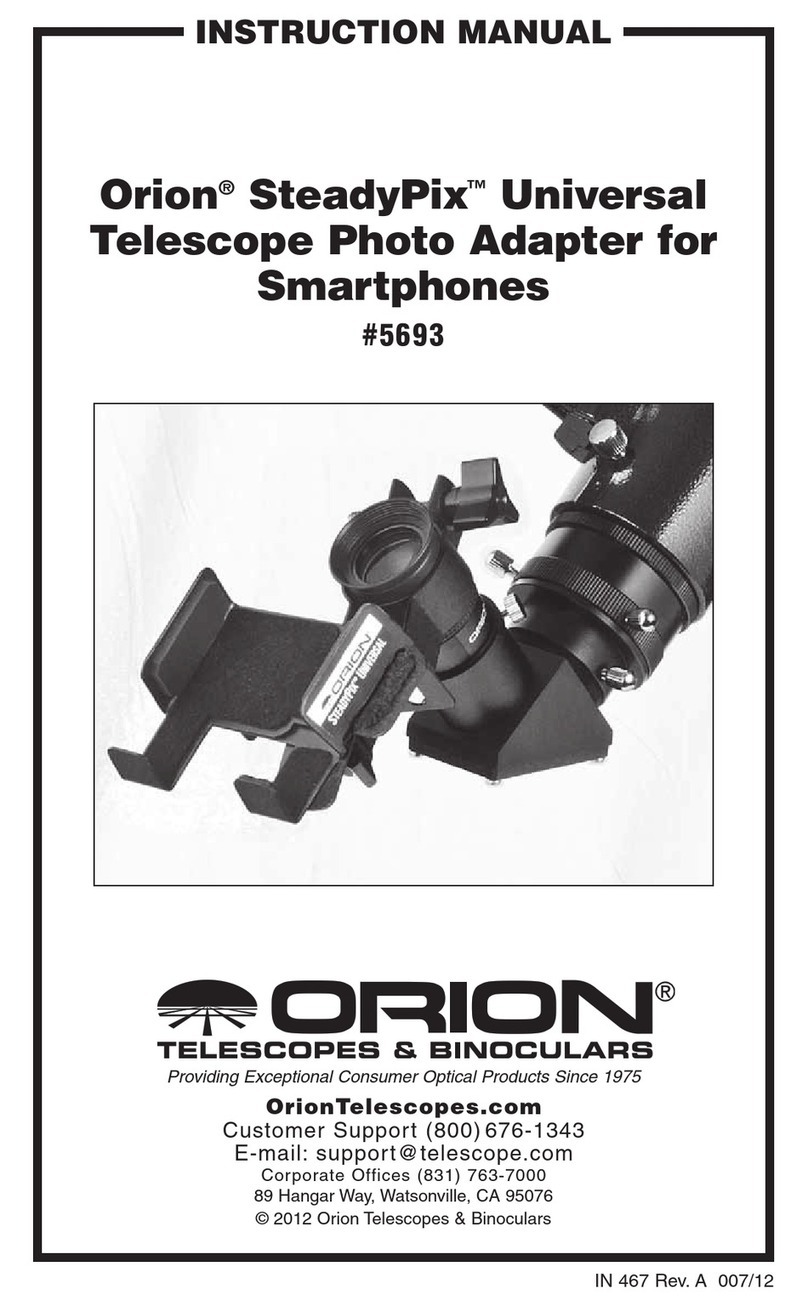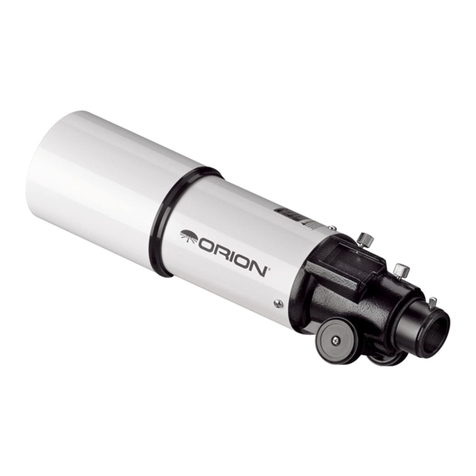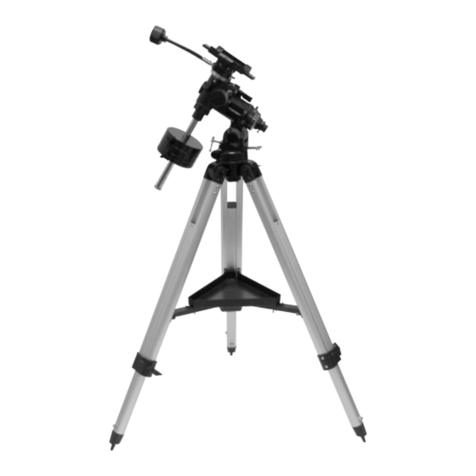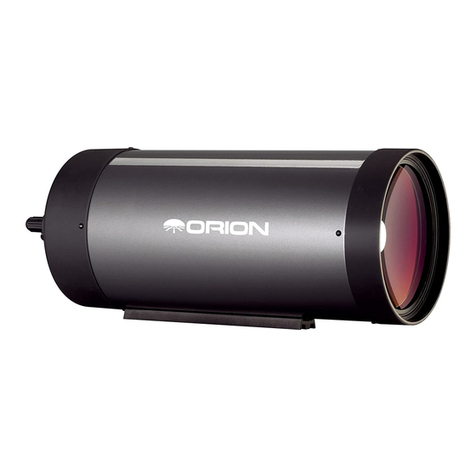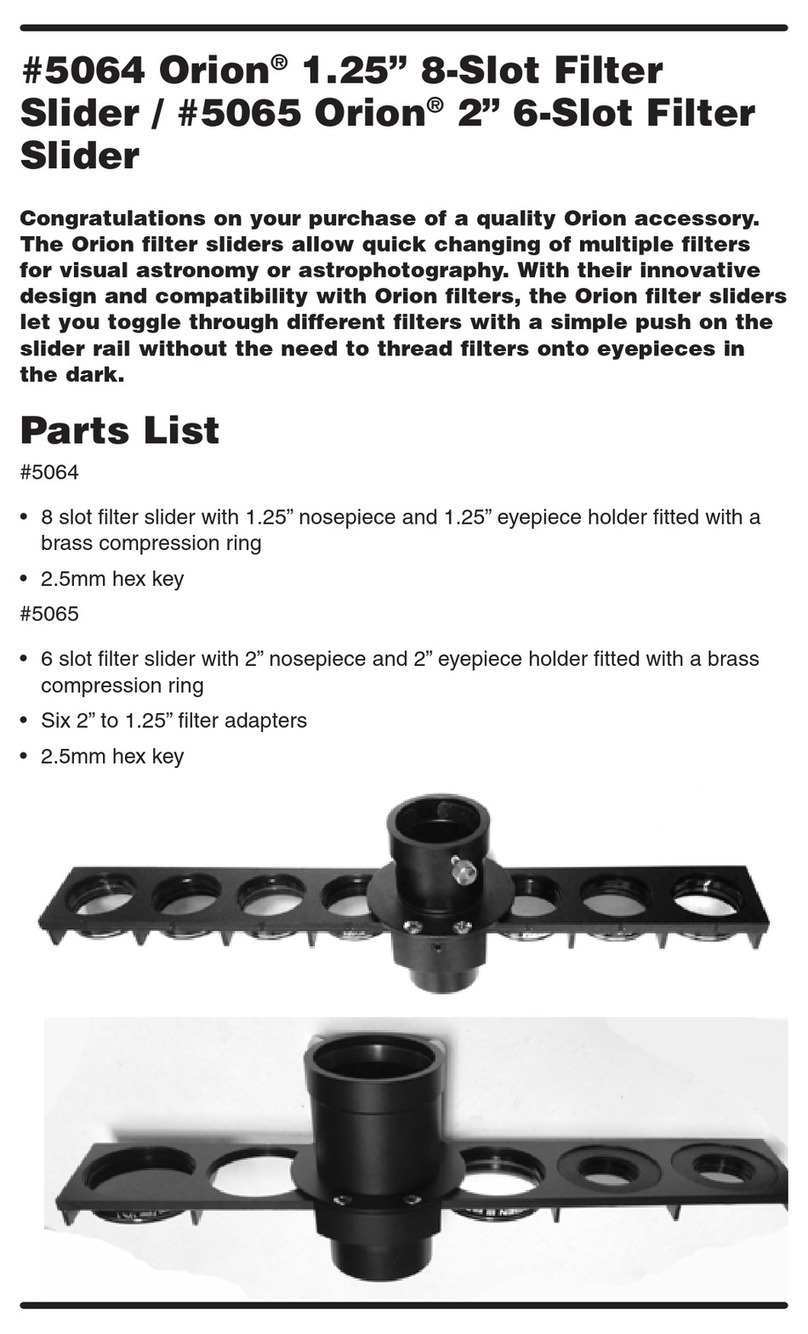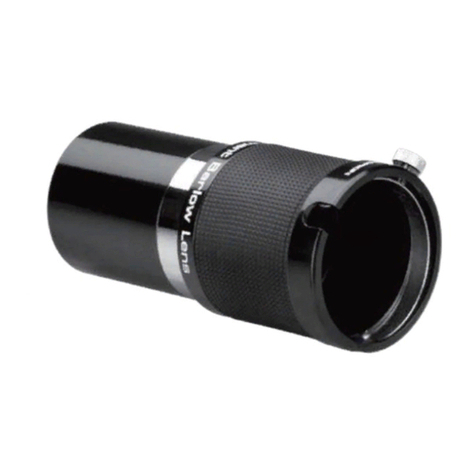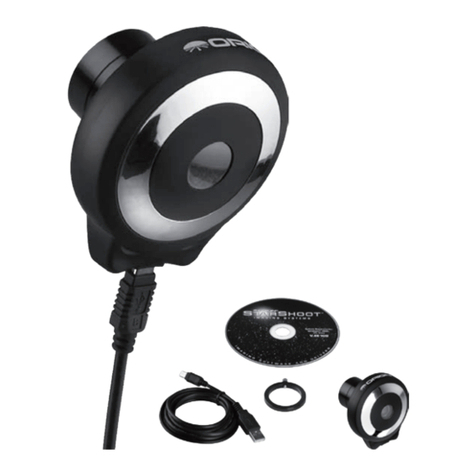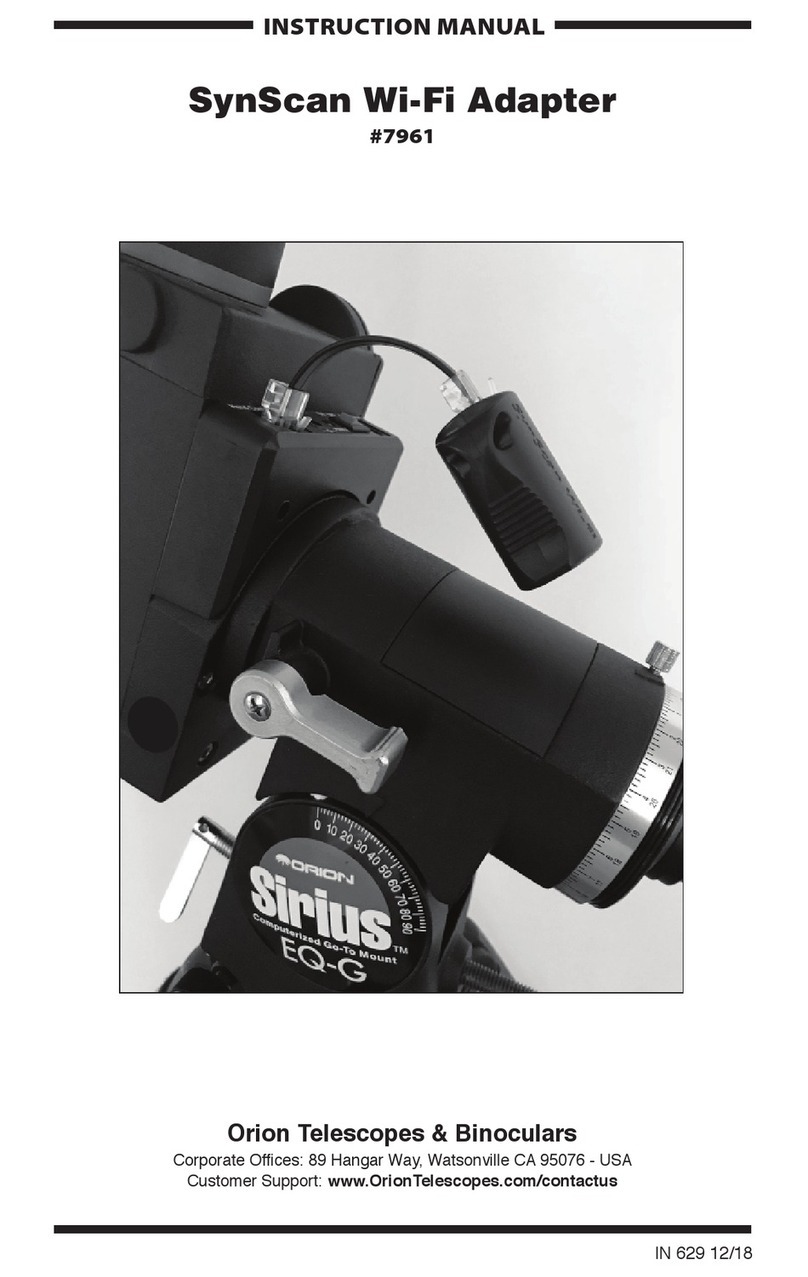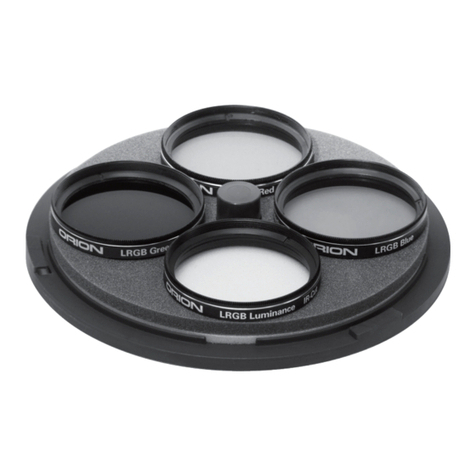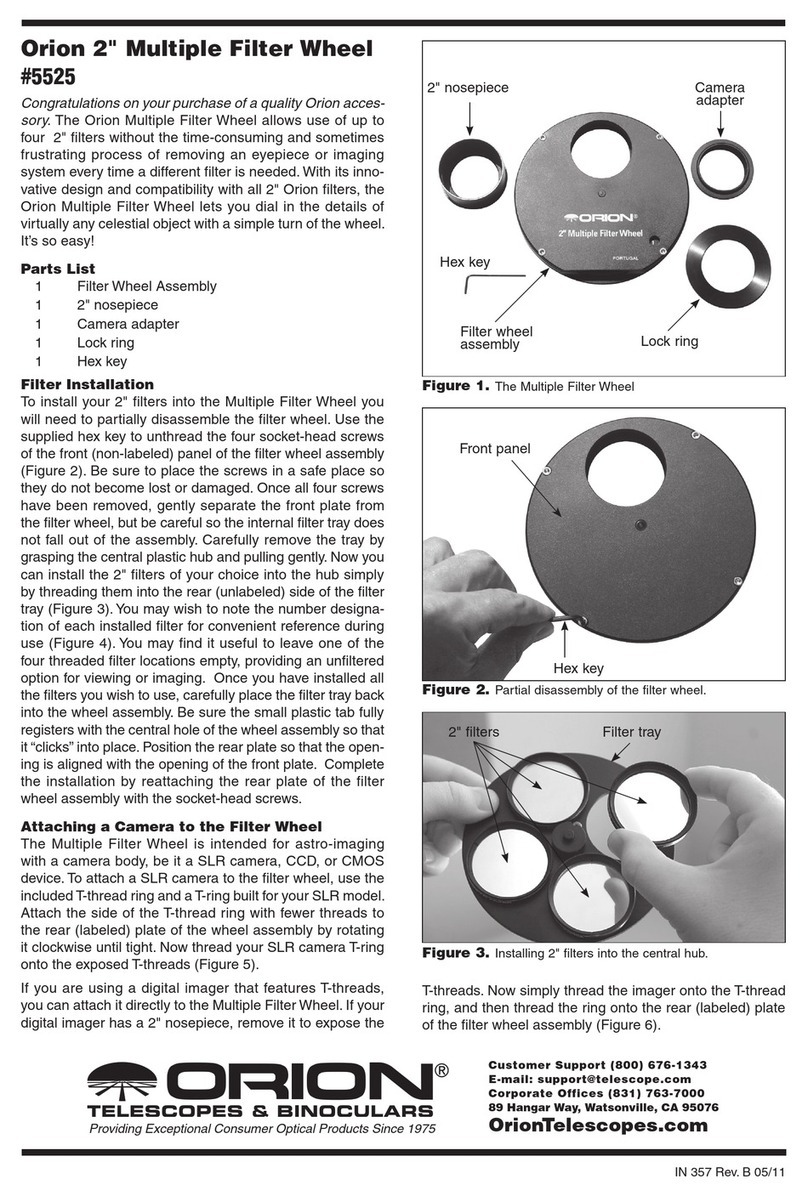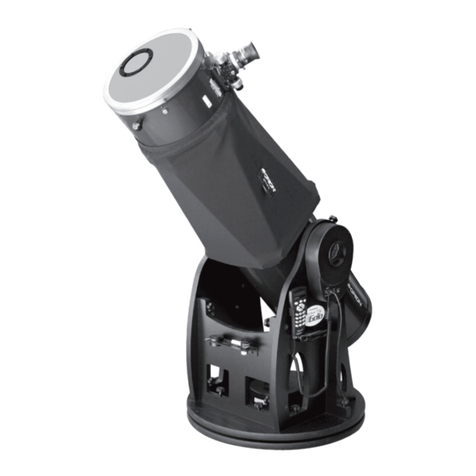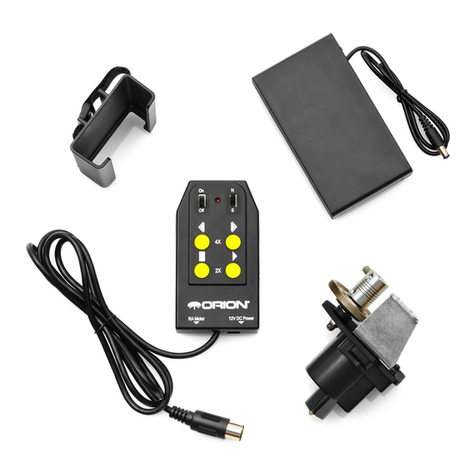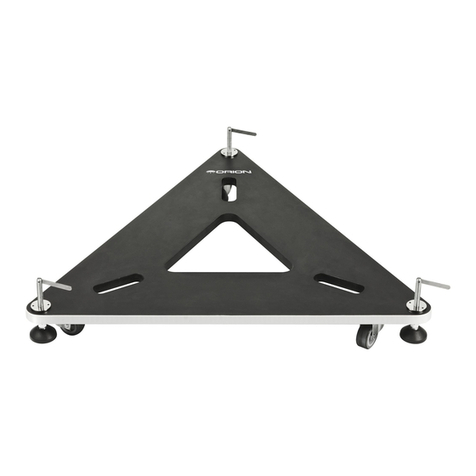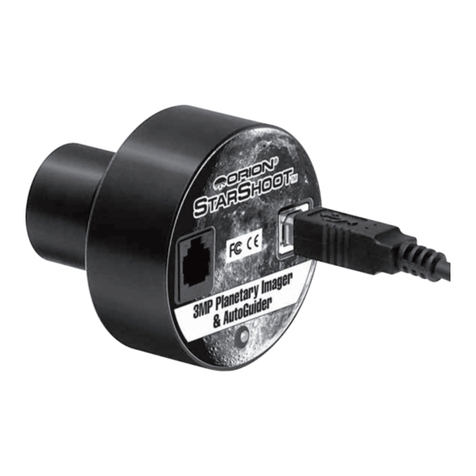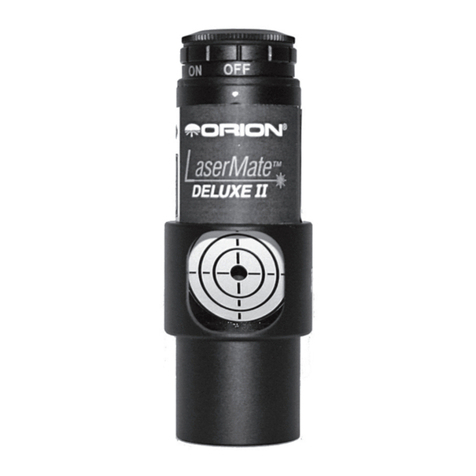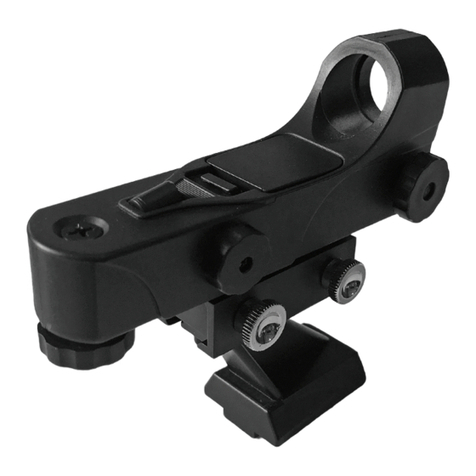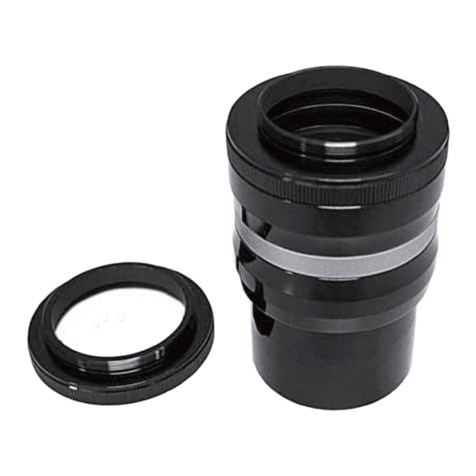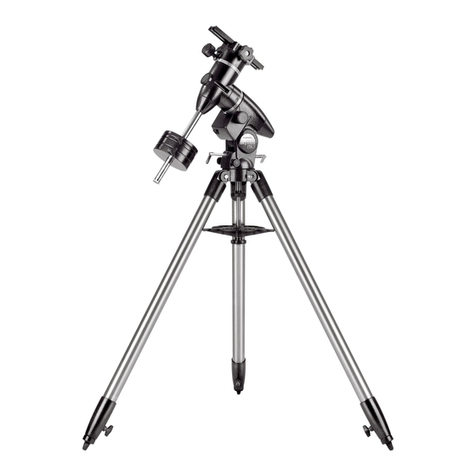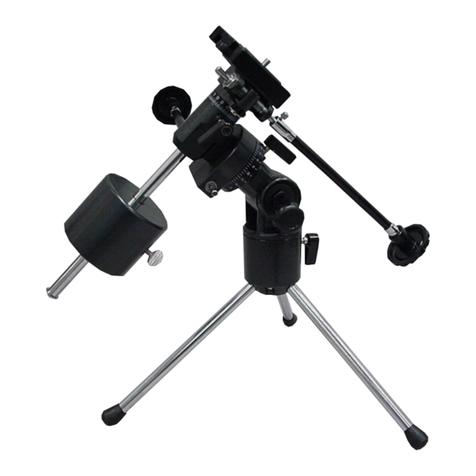
6 7
Imaging the Moon
Imaging the Moon is much like imaging
terrestrial objects during the day. Since
the exposure is very short, it is not
critical that the telescope be precisely
polar aligned.
When the moon is past half full,
it is hard to get detail due to the
tremendous glare off of the lunar
surface. Most detail, even on a sliver of
a moon, will be at the terminator (that
tiny thin line between the shadow and
light, see Figure 3). To get more of the
moon in the image, a focal reducer will need to be used. For close-ups of
craters use a Barlow lens (see “Using Focal Reducers and Barlow Lenses”).
Imaging Planets
The best planetary images will be obtained by stacking (combining) many
individual images in order to improve image contrast, brightness, and detail
(Figure 4).
A great way to obtain images for stacking is to take several seconds of video
of the planet, then break the video into individual frames for stacking. Since
the SSVEII has a frame rate of 30 frames per second, you can literally obtain
hundreds of images for stacking in seconds! You save time by taking one
video instead of dozens of individual pictures!
Since you will be taking multiple images over a period of time, it is important
you have a decent polar alignment in order to keep the planet within the field
of view of the camera. To this end, having a motor drive (at least single-axis)
will also be helpful. Otherwise, you will periodically need to rotate the R.A.
slow-motion knob to keep the planet within the camera’s field.
Tips
Focusing
One of the hardest things to do in planetary imaging is achieving good
focus. You can make this process easier by simply watching the Live Video
on your display device to focus. Depending upon the viewing conditions
you may notice that the image goes in and out of focus this is due to
viewing conditions. This is to be expected and one of the reasons why post
processing software can bring out the best in your captured images. Focus
as best as possible with the average frame being at best focus to ensure
more in focus frames than out of focus. Image processing software can then
be used to select the best frames to combine for best results.
Refocus often throughout your imaging session. This ensures at least some
of your images will have an excellent focus. It is also not uncommon for
telescope movements to alter the focus slightly, so be sure to refocus for any
new astro-imaging targets.
Choosing a Site for Astro-imaging
Once you have a focused image, you may find your image shifting and
washed out. This can be caused by many environmental factors. Poor
seeing (movement of molecules in the air, such as heat rising) and poor
transparency (moisture, smoke, or other sky contaminants) will all serve to
reduce image quality. That is why most major astronomical telescopes are on
high mountains in thin air, to get above much of the seeing and transparency
problems. Also, wind will move your telescope and affect images. Your
eyes viewing through an eyepiece can change slightly to compensate for
disturbances like these, but the camera cannot. Keep these factors in mind
when choosing an observing site for astronomical imaging.
For the best astro-images, we recommend finding a location with dry air,
some altitude, and away from city or streetlights. Even a nearby hilltop in
the countryside can provide better viewing conditions than many convenient
backyard locations.
Using Focal Reducers and Barlow Lenses
Focal reducers serve to decrease the focal length of your telescope.
This increases the field of view seen by the camera (decreases camera
magnification). This can be useful for obtaining images of wider objects, such
as the full Moon or a landscape vista.
Barlow lenses, or other tele-extenders, increase the focal length of your
telescope, which makes the camera field of view narrower (increases camera
magnification). This is useful for high-power planetary images. Keep in mind
that when the focal length is doubled, the image will become four times
dimmer, so a longer exposure may be necessary.
For best planetary imaging, you should shoot with an effective focal ratio
(telescope focal length ÷ telescope aperture) of F/20 or greater. This will give
you a good combination of image brightness and image scale for planets.
For most telescopes, a Barlow lens will be required to obtain this focal ratio.
For example, Schmidt-Cassegrain telescopes usually have a focal ratio of
F/10. A 2x Barlow lens doubles the effective focal length of the telescope,
which makes the focal ratio f/20. Similarly, a 3x Barlow lens will yield of focal
ratio of F/30. You can also try using multiple Barlows to obtain even greater
effective focal ratios. There is a limit to how large a focal ratio your telescope
and seeing conditions can handle, however. Experimentation will be needed
to see what your telescope is capable of in the seeing conditions on a given
night. If the image appears somewhat dim and fuzzy on the computer screen,
you may want to consider removing the Barlow lens.
Figure 3. The moon’s surface detail
looks the best along the terminator.
